Time-lapse export failures typically stem from mismatched frame rates, inadequate codec selection, and insufficient color bit depth. You’ll face stuttering playback when input and export frame rates don’t align, while choosing the wrong codec compromises data integrity. For scientific microscope footage, verify you’re using at least 10-bit color depth and appropriate buffer settings to handle large image sequences. Hardware acceleration and proper memory management also greatly impact successful exports. Understanding these vital settings prevents workflow disruptions and preserves essential details.
Numeric List of 10 Second-Level Headings
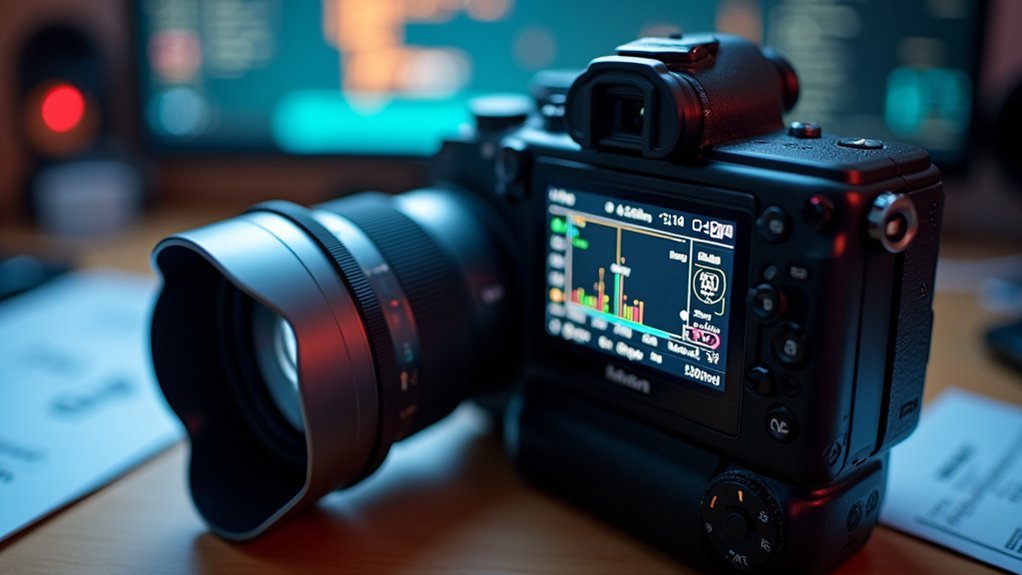
When organizing your time-lapse export settings, you’ll need to understand several key configuration areas. The most critical settings include:
- Frame Rate Configuration
- Output Resolution Settings
- File Format Selection
- Compression Parameters
- Metadata Inclusion Options
- Color Grading Profiles
- Frame Sequence Numbering
- Audio Synchronization Controls
- Export Destination Paths
- Processing Priority Levels
Each of these settings impacts your time-lapse export process differently. When you overlook proper configuration, you’ll likely encounter error messages that halt production.
Proper configuration prevents workflow disruptions—meticulous settings management is your shield against export failures.
For instance, incorrect frame rate settings can cause timing issues, while improper format selection may trigger codec compatibility errors. Understanding these parameters guarantees smooth exports without technical interruptions.
Frame Rate Mismatches Between Capture and Export
Among the settings discussed previously, Frame Rate Configuration deserves special attention, as it’s often the source of technical problems in time-lapse projects.
When your export settings don’t match your capture frame rate, you’ll likely encounter frustrating playback issues like stuttering or choppy motion.
If you’ve captured footage at 60 fps but export at 30 fps, your time-lapse may appear jerky rather than smooth. To avoid this, always set both Input FPS and Video FPS to identical values during export—preferably matching your original capture rate.
Before finalizing your project, test short clips at different frame rates to determine ideal export settings. This simple step can save you from the disappointment of seeing your carefully crafted time-lapse freeze or lag due to frame rate mismatches.
Codec Selection for Scientific Time-Lapse Compatibility
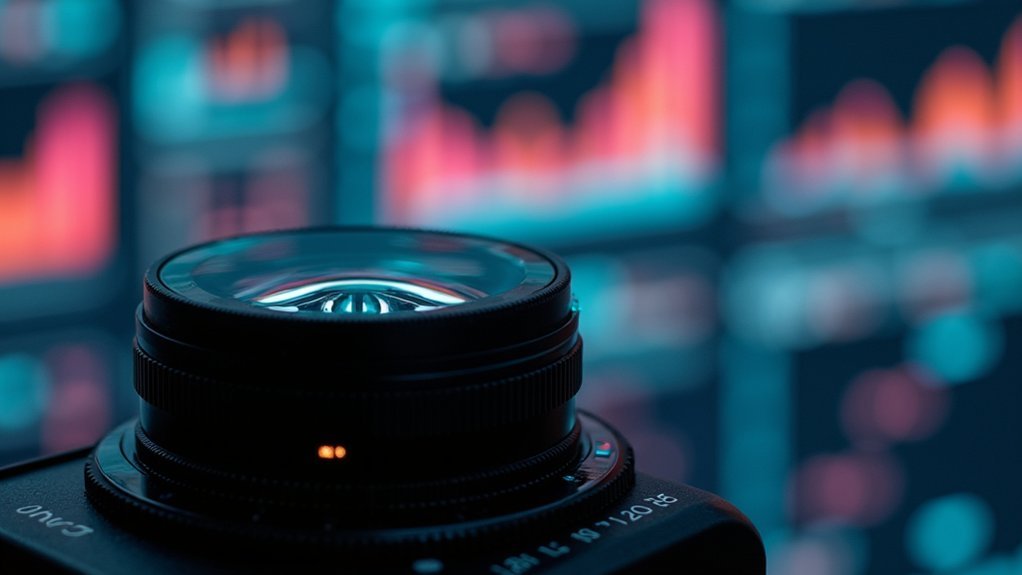
Selecting the appropriate codec forms the foundation of scientific time-lapse work, as it directly impacts both compatibility and data integrity.
When exporting your time-lapse sequences, H.264 within an MP4 container offers the best balance between quality and file size, ensuring your work remains accessible across multiple platforms and devices.
For projects requiring superior color fidelity and minimal compression artifacts, consider ProRes or DNxHD codecs, though you’ll need to manage larger file sizes.
Remember to align your codec settings with your original footage’s frame rate to prevent playback issues and maintain smooth motion in your sequences.
Always verify your chosen codec’s technical specifications against your project requirements, as some codecs have limitations regarding maximum resolution or bit rate that could compromise your scientific time-lapse quality.
Resolution and Scale Considerations for Microscope Footage
You’ll need to analyze your microscope’s pixel density to determine the ideal resolution for your time-lapse exports.
Match your scale settings to your intended display device, typically selecting 1920×1080 for standard HD presentations rather than maintaining the full sensor resolution.
Remember that your microscope’s sensor imposes natural resolution limits, so scaling down from very high resolutions (like 5184×2912) can prevent processing crashes while maintaining scientific validity.
Pixel Density Analysis
While capturing intricate cellular details is the goal of microscope time-lapses, managing pixel density effectively determines whether your footage will actually render. Your export settings must balance detail preservation with practical considerations.
When working with high-resolution microscope captures (like 5184 x 2912 px), you’ll need to assess ideal pixel density:
- Downsampling to 1920×1080 resolution maintains clarity while preventing application crashes
- Preserving the original aspect ratio ensures your cellular structures don’t appear distorted
- Adjusting the scaling factor creates manageable file sizes without sacrificing essential details
- Setting a consistent frame rate (25-30 fps) prevents playback issues with pixel-dense footage
Remember that excessive pixel density demands substantial processing power.
Scale Matching Protocol
Beyond managing pixel density, the proper scale matching between your microscope footage and export settings forms the backbone of successful time-lapse creation. When exporting, you’ll need to maintain your original resolution (like 5184 x 2912 px) to avoid scaling issues that can derail your entire project.
| Resolution Issue | Consequence | Solution |
|---|---|---|
| Mismatched dimensions | Distorted playback | Match export to source exactly |
| Altered aspect ratio | Visual stretching | Maintain original proportions |
| Incorrect frame rate | Timing inaccuracies | Set 24-30 fps for natural motion |
Always check your export dialogue settings before rendering. If you don’t match the scale settings to your original footage, you’ll risk cropping important details or introducing pixelation that destroys the scientific value of your microscope time-lapse.
Sensor Resolution Limits
Microscope sensors impose fundamental physical limitations on time-lapse footage quality that can’t be overcome in post-processing. Your sensor resolution directly determines the detail captured in each frame, affecting the final image quality of your time-lapse sequence.
- Higher pixel density sensors capture finer details in specimens, especially essential for intricate microscopic structures.
- Match your sensor resolution to intended display resolution—upscaling low-resolution footage leads to noticeable quality loss.
- Consider field of view constraints at high magnifications when planning your time-lapse framing.
- Remember that optical resolution of your microscope system creates a ceiling for detail capture, regardless of sensor capabilities.
When exporting your time-lapse, always account for these sensor resolution limits to guarantee your footage accurately represents the microscopic phenomena you’ve worked so hard to document.
Hardware Acceleration Settings for Processing Dense Image Sequences
Three key hardware acceleration settings can notably reduce export times when processing dense image sequences for timelapses. When you enable GPU rendering in your editing software, your computer offloads intensive processing tasks from the CPU, markedly speeding up export workflows. Always verify your graphics drivers are current to maximize compatibility with your editing application.
Consider clearing your media cache regularly to prevent bottlenecks that can hamper hardware acceleration benefits.
| Setting | Impact | Recommendation |
|---|---|---|
| GPU Selection | High | Choose dedicated over integrated |
| Memory Allocation | Medium | Allocate 75-80% of available GPU memory |
| Renderer Type | High | Use Metal (Mac) or CUDA/OpenCL (PC) |
| Preview Resolution | Medium | Work at 1/2 or 1/4 when editing |
| Background Processing | Low | Enable for continuous rendering |
Memory Management During High-Resolution Time-Lapse Export
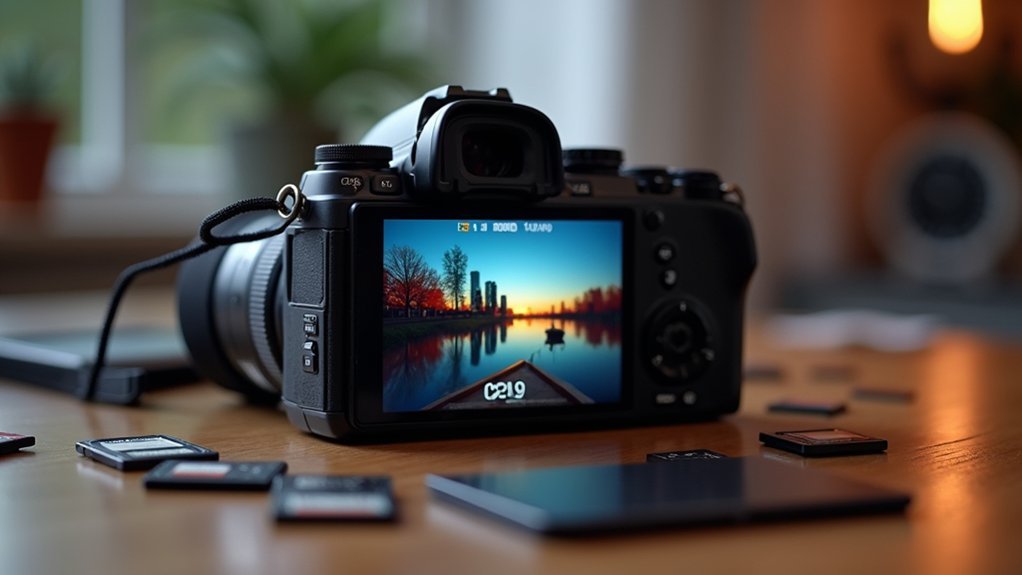
While creating stunning high-resolution timelapses demands careful attention to export settings, effective memory management remains equally critical for successful rendering. Your system’s RAM capacity directly impacts export reliability, with 16GB serving as the minimum recommendation for handling large image sequences without crashes.
To optimize your memory management during exports:
- Clear your media cache regularly to free up RAM resources that would otherwise be wasted on unnecessary cached files.
- Leverage your GPU’s processing power while ensuring your system’s memory bandwidth isn’t creating a bottleneck.
- Consider exporting in smaller segments when working with particularly demanding sequences.
- Temporarily reduce resolution if you’re experiencing persistent memory constraints during export.
These adjustments help prevent the frustrating application freezes that occur when your system runs out of resources during complex time-lapse renders.
Color Bit Depth Requirements for Accurate Scientific Data
When documenting scientific phenomena through time-lapse footage, selecting the appropriate color bit depth becomes essential for preserving data integrity. Your export quality directly depends on this often-overlooked setting.
For scientific data visualization, you’ll need at least 10 bits per channel to capture subtle variations in your samples. The standard 8-bit format with only 256 shades per channel simply won’t suffice for precise scientific work.
Consider using 16-bit color depth, which provides 65,536 shades per channel—a dramatic improvement that guarantees fine gradations are faithfully represented. This precision helps you avoid banding artifacts that can compromise your research findings.
Most professional video editing software allows you to select your desired bit depth during export.
Don’t sacrifice data accuracy by choosing lower settings to save space.
Temporal Compression Artifacts in Cellular Imaging
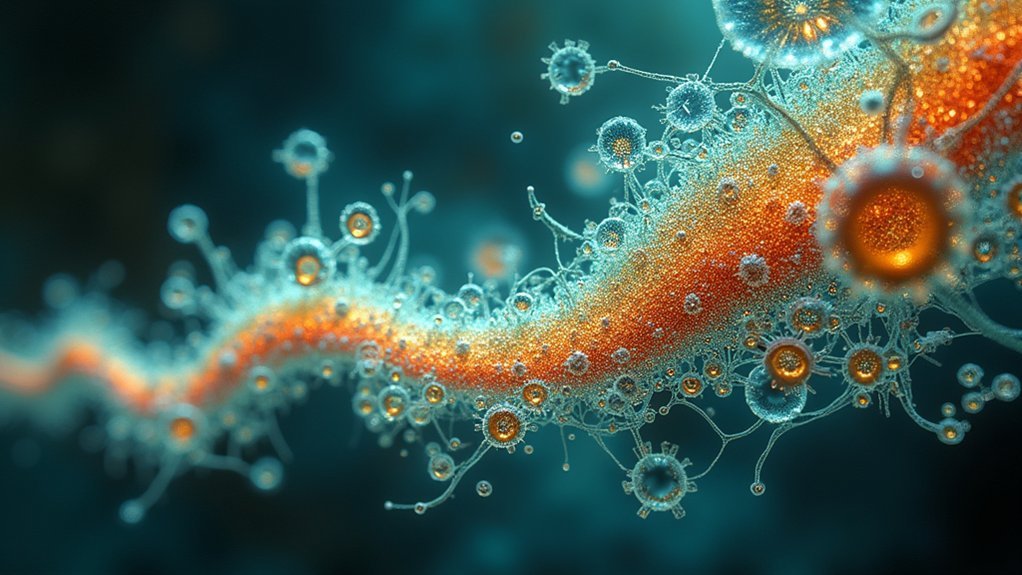
Cellular imaging presents unique challenges for time-lapse recording, as standard compression methods can destroy critical scientific data. When you export your time-lapse sequences, temporal compression artifacts can obscure the very cellular structures you’re trying to document.
To minimize these artifacts in your exports:
Export settings should balance scientific integrity with temporal fidelity to preserve the true nature of cellular dynamics.
- Select higher frame rates to reduce motion blur during dynamic cellular processes
- Avoid excessive compression rates that sacrifice critical structural details
- Implement optical flow algorithms to enhance motion clarity between frames
- Carefully calibrate your equipment with appropriate exposure times
Remember that temporal compression artifacts aren’t just aesthetic issues—they can lead to misinterpretation of cellular behavior.
The right export settings guarantee your time-lapse sequences maintain scientific integrity while accurately capturing cell movements and interactions without distortion.
File Format Limitations When Preserving Microscopic Detail
You’ll encounter significant detail loss when exporting time-lapse microscopy using highly compressed formats like H.264, where codec artifacts can obscure critical cellular structures.
Your bit depth selection directly impacts how much tonal information remains intact, with 8-bit formats discarding subtle gradations that might be essential for accurate analysis.
Consider using lossless formats such as TIFF or RAW when microscopic detail preservation is paramount, despite the larger file sizes they generate.
Subheading Discussion Points
To preserve microscopic detail in your time-lapse exports, understanding file format limitations becomes critical for success. When you export time-lapse footage containing fine details, your choice of format, resolution, and codecs directly impacts the final quality. Many overlooked settings can derail your project’s visual integrity.
- Lossless vs. Lossy Trade-offs – PNG and TIFF preserve details but create larger files, while JPEG compression introduces artifacts in microscopic elements.
- Resolution Requirements – Higher resolution exports maintain clarity of fine textures but demand more processing power.
- Codec Considerations – H.264 and ProRes offer different balances between file size and detail preservation.
- Frame Rate Impact – Careful adjustment prevents choppy playback while maintaining the clarity of subtle movements in microscopic subjects.
Codec Compression Artifacts
The invisible enemy of microscopic detail in time-lapse footage is codec compression. When you export your carefully crafted sequences, your choice of codec directly impacts how much detail survives the rendering process. H.264 might be convenient for sharing, but it’s notorious for introducing compression artifacts that obliterate the fine details you’ve worked hard to capture.
| Codec Type | Detail Preservation | File Size Impact |
|---|---|---|
| H.264 | Low | Small |
| ProRes | High | Large |
| DNxHR | High | Large |
To preserve microscopic elements in your time-lapse, opt for lossless or high-bitrate codecs. Remember that bitrate settings within your chosen format are equally vital – higher bitrates reduce compression artifacts but increase file size. Always balance your export settings with your intended playback medium.
Bit Depth Considerations
Three critical dimensions impact your time-lapse quality, with bit depth standing as perhaps the most overlooked.
When you’re capturing microscopic details, your choice of bit depth directly determines how much color precision your final export retains.
Standard 8-bit formats like JPEG simply won’t preserve the subtle gradient shifts your time-lapse requires. Instead, consider:
- Higher bit depths (16-bit) to prevent banding in smooth gradients
- TIFF or PNG formats that support increased color precision
- Export settings in your video editor that maintain original bit depth
- Balancing larger file sizes against quality requirements
When working in Premiere Pro or similar applications, always check your export bit depth settings.
You’ll face a trade-off between file size and quality, but preserving those delicate color shifts is worth the storage investment for professional time-lapse work.
Buffer Settings for Handling Large Image Sequences
When working with massive time-lapse sequences containing hundreds or thousands of high-resolution images, proper buffer settings become essential for successful exports. Your system needs sufficient memory allocation to process these large image sequences without crashing or freezing mid-export.
You’ll need to increase buffer sizes to accommodate larger files, but monitor memory usage carefully—exceeding available RAM leads to export failures.
If you notice skipped frames or unusually long processing times, your buffer settings are likely too conservative. Finding the ideal configuration requires some experimentation, as it varies between different software applications and hardware setups.
The right balance guarantees your time-lapse exports process efficiently without overtaxing your system resources, resulting in smooth, professional final videos.
Frequently Asked Questions
Why Is Video Export so Slow?
Your video export is slow because you’re using high resolution, complex effects, resource-intensive codecs like H.265, and your computer’s RAM/CPU is limited or being used by other running applications.
How Do I Make My Time-Lapse Smoother?
To make your time-lapse smoother, guarantee your input and video FPS match, aim for 24-30 FPS for cinematic feel, reduce output dimensions, maintain consistent capture intervals, and regularly clean your media cache for better performance.
How Many Times Faster Is Time-Lapse Than Normal?
Time-lapse videos typically run 10x to 300x faster than normal speed. You’ll see more dramatic effects at higher speeds, while your footage’s smoothness depends on your capture interval and playback frame rate choice.
Why Is Premiere Pro Taking so Long to Export?
Your Premiere Pro export is slow likely due to complex project elements, high-resolution settings, limited RAM, or CPU bottlenecks. Try clearing media cache and enabling GPU acceleration to improve rendering times.
In Summary
You’ve now mastered the critical settings that prevent time-lapse export failures. By matching frame rates, choosing appropriate codecs, and considering resolution limitations, you’ll avoid common pitfalls. Don’t overlook hardware acceleration, bit depth, and compression settings—they’re essential for scientific accuracy. Remember to adjust buffer settings for large sequences and select file formats that preserve microscopic detail. With these adjustments, your time-lapse exports will consistently succeed.

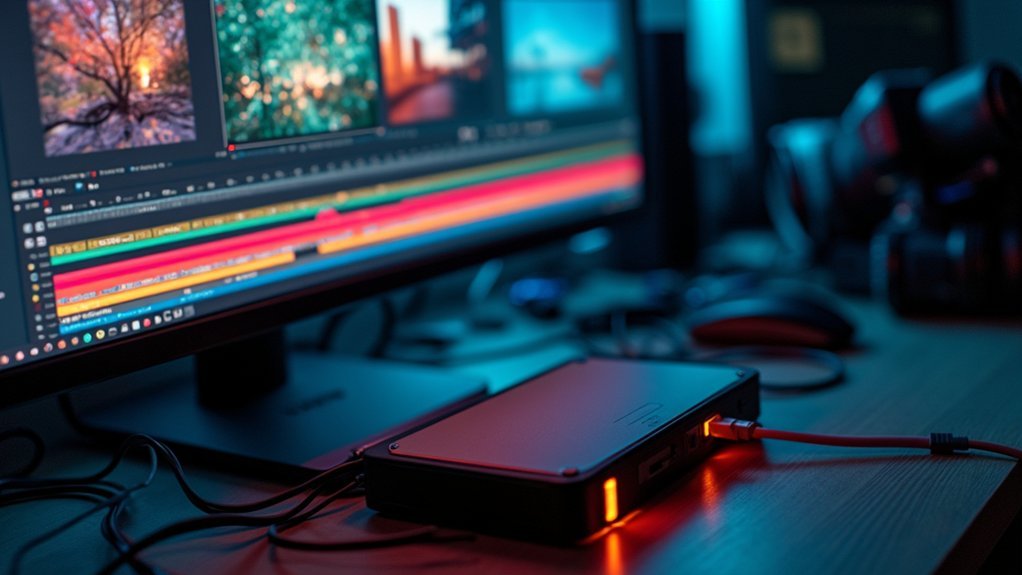



Leave a Reply